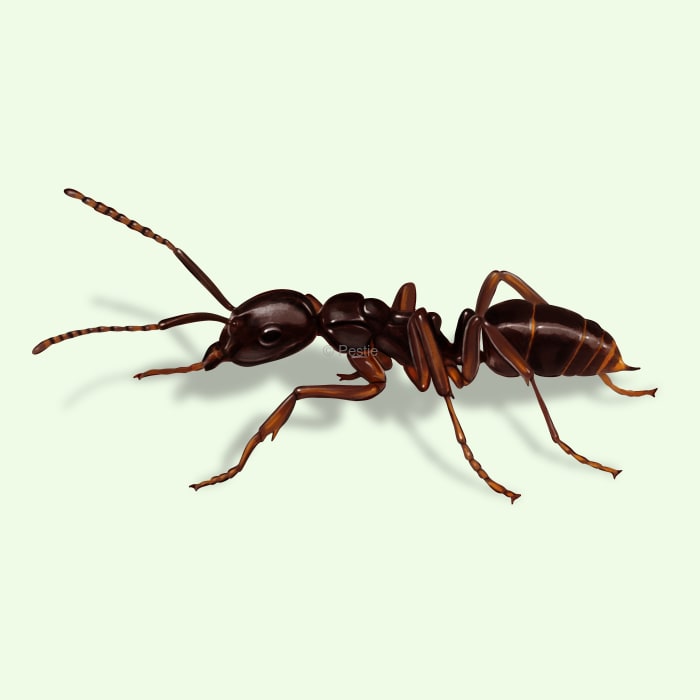How to identify and treat Asian needle ants

Pain in the ants – how to deal with Asian needle ants
Asian needle ants are an invasive species that have been in the US since the 1930s but have recently become a more common pest in certain parts of the country. The worst part of these pest ants is the brutal stinger that they use to defend themselves.
These ants start showing up in early spring and remain active throughout the fall. They’re known for their ability to outcompete other ant species and eliminate their colonies from their claimed territories.
Luckily, Asian needle ants aren’t as aggressive as fire ants, and their colonies are much smaller, so you’re less likely to come into contact with them.
These ants love sweets and will wander into homes to find any sugary substances left on floors or counters. However, they are also predators, going after termites, other ant species, or small insects. Their adaptability allows them to survive in a variety of environments.
How to identify Asian needle ants
Asian needle ants have dark brown to black bodies with noticeably lighter legs and antennae. Their antennae are elbowed and shorter than their body, and they possess a stinger that can be used defensively. Another way to tell if you have an Asian needle ant is to capture it in a glass jar and see if it can climb the walls. Asian needle ants can’t cling to slick surfaces, unlike other household ants.
How big are Asian needle ants?
The workers are about 1/5 of an inch long.
Where do Asian needle ants live?
While they are originally from Asia, Asian needle ants are predominantly found in the southeastern US but are spreading to other regions.
How to get rid of Asian needle ants
Dealing with Asian needle ants is similar to dealing with other household ant pests. The best way is to prevent them from coming inside in the first place.
- Remove Attractants: Keep your yard clear of debris and standing water where these ants can nest.
- Seal Entry Points: Caulk cracks and crevices around your home’s foundation, windows, and doors to prevent entry.
- Maintain Yard: Trim back vegetation from the house to remove ant pathways and reduce moisture around the building.
- Clean up sweets: Make sure you clean up any sugary drinks or spills on floors or counters.
- Insect barrier: Additionally, you can use a perimeter spray to keep ants from marching inside. Pestie offers a simple DIY solution that incorporates the same ingredients the pros use.
Treat asian needle ants with Pestie
If you're still having trouble keeping asian needle ants away, the best option is to use a pro-grade, effective pest control solution like Pestie.
Pestie is a do-it-yourself pest control solution that's specially designed to keep asian needle ants and other pests away from your home.
With Pestie, you can rest easy knowing that your living space is protected and free of creepy crawlies. And the best part? It's designed for people, pets, and the planet, so you can say goodbye to harsh chemicals and hello to peace of mind!
- Save hundreds compared to traditional annual pest plans
- People, pet, and planet-friendly
- Pro-grade customized formulas
Quick facts
How dangerous are Asian Needle Ants?
Medium danger risk
Their stings can cause an allergic reaction in some people, similar to a bee sting.
- Scientific name
Brachyponera Chinensis
- Other common names
Giant Needle Ants
- Colors
Black or dark brown with lighter legs
- Life span
Workers can live up to a few weeks
- Diet
Ants, termites, other insects, sweets
Asian needle ants are more cold-tolerant than most ants, so they can come out earlier in spring.








